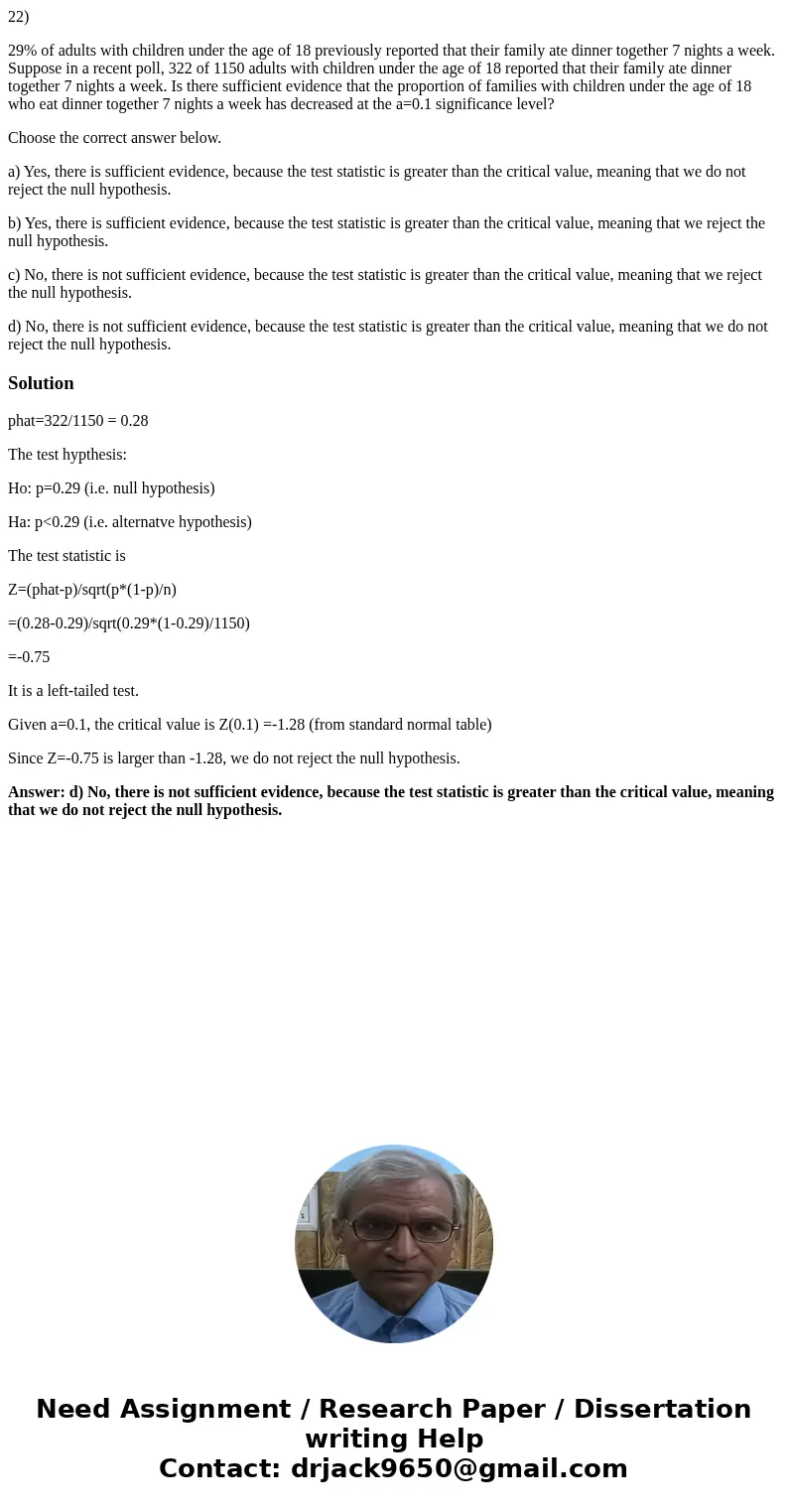22 29 of adults with children under the age of 18 previously
22)
29% of adults with children under the age of 18 previously reported that their family ate dinner together 7 nights a week. Suppose in a recent poll, 322 of 1150 adults with children under the age of 18 reported that their family ate dinner together 7 nights a week. Is there sufficient evidence that the proportion of families with children under the age of 18 who eat dinner together 7 nights a week has decreased at the a=0.1 significance level?
Choose the correct answer below.
a) Yes, there is sufficient evidence, because the test statistic is greater than the critical value, meaning that we do not reject the null hypothesis.
b) Yes, there is sufficient evidence, because the test statistic is greater than the critical value, meaning that we reject the null hypothesis.
c) No, there is not sufficient evidence, because the test statistic is greater than the critical value, meaning that we reject the null hypothesis.
d) No, there is not sufficient evidence, because the test statistic is greater than the critical value, meaning that we do not reject the null hypothesis.
Solution
phat=322/1150 = 0.28
The test hypthesis:
Ho: p=0.29 (i.e. null hypothesis)
Ha: p<0.29 (i.e. alternatve hypothesis)
The test statistic is
Z=(phat-p)/sqrt(p*(1-p)/n)
=(0.28-0.29)/sqrt(0.29*(1-0.29)/1150)
=-0.75
It is a left-tailed test.
Given a=0.1, the critical value is Z(0.1) =-1.28 (from standard normal table)
Since Z=-0.75 is larger than -1.28, we do not reject the null hypothesis.
Answer: d) No, there is not sufficient evidence, because the test statistic is greater than the critical value, meaning that we do not reject the null hypothesis.

 Homework Sourse
Homework Sourse